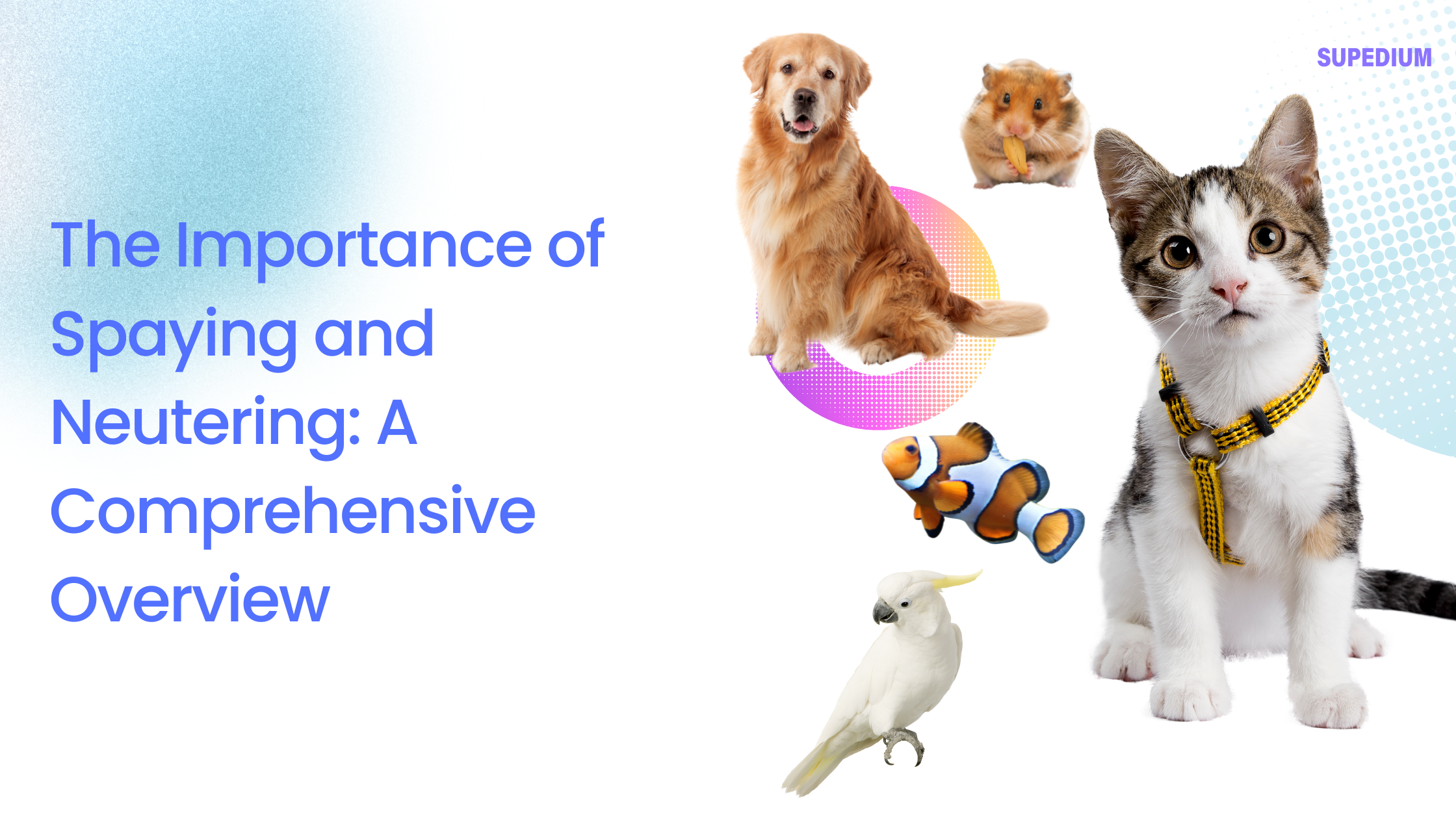Table of Contents
![]()
Introduction
Spaying and neutering are surgical procedures designed to prevent pets from reproducing. Spaying involves the removal of a female animal’s ovaries and usually the uterus, while neutering refers to the removal of a male animal’s testicles. These procedures are crucial for various reasons, encompassing health benefits for pets, behavioral improvements, and significant contributions to controlling animal populations.
Health Benefits
For Female Pets
Spaying female pets brings substantial health benefits. One of the most significant advantages is the reduction in the risk of ovarian and uterine cancers. By removing these reproductive organs, the likelihood of these types of cancers is virtually eliminated. Additionally, spaying helps prevent pyometra, a severe and potentially life-threatening infection of the uterus. Moreover, spaying before a pet’s first heat cycle can significantly lower the risk of developing mammary tumors, which are often malignant.
For Male Pets
Neutering male pets also contributes to their overall health. One of the primary benefits is the elimination of testicular cancer, a common condition in unneutered males. Neutering also reduces the risk of prostate problems, which can be a concern in older, intact males. Furthermore, neutered males are less likely to exhibit aggressive behaviors or develop certain infections.
General Health Benefits
Both spayed and neutered pets often experience fewer behavioral issues. For example, they are less likely to roam in search of a mate, reducing their risk of injury or getting lost. Additionally, these procedures can decrease aggressive behaviors associated with mating instincts, leading to a more stable and harmonious pet.
Behavioral Benefits
Decreased Aggression
One notable behavioral benefit of spaying and neutering is the reduction in aggression. Neutered males are less likely to engage in aggressive behaviors toward other animals and people. Spayed females also show a decrease in aggression related to hormonal cycles. Territorial marking, which is often a problem in intact males, is also significantly reduced or eliminated.
Reduced Roaming
Roaming is another behavior often curtailed by spaying and neutering. Intact animals, driven by the need to find a mate, may wander far from home, increasing their risk of accidents and injuries. By removing this instinctual drive, spayed and neutered pets are less likely to stray from their homes, enhancing their safety.
Decreased Noisy Behaviors
Pets that are not spayed or neutered may exhibit noisy behaviors such as howling or yowling, especially when in heat. Spaying and neutering eliminate these behaviors, leading to a quieter and more peaceful living environment for both pets and their owners.
Population Control
Overpopulation Issues
One of the most pressing reasons for spaying and neutering is the control of pet overpopulation. Statistics reveal that millions of animals end up in shelters each year, and a significant number are euthanized due to lack of homes. Overpopulation strains animal shelters and rescue organizations, leading to overcrowded conditions and increased euthanasia rates.
Benefits of Reduced Numbers
By spaying and neutering pets, the number of animals entering shelters decreases. This not only improves the quality of life for animals in shelters but also increases the chances of adoption for pets who are already there. Fewer strays mean fewer animals suffering on the streets and more opportunities for those in shelters to find loving homes.
Community Impact
Reducing the number of stray and feral animals benefits entire communities. Fewer strays lead to lower public health risks, such as the spread of diseases and parasites. Additionally, communities with fewer stray animals experience less property damage and reduced nuisance complaints.
Economic Considerations
Cost of Spaying/Neutering vs. Long-Term Costs
The cost of spaying or neutering a pet is relatively low compared to the long-term expenses associated with medical issues arising from not performing these procedures. For instance, treating cancer or reproductive infections can be far more expensive than the initial cost of spaying or neutering. Additionally, unplanned litters can result in financial burdens related to caring for multiple animals.
Funding and Subsidy Programs
To address cost barriers, many communities offer low-cost or subsidized spaying and neutering services. Grants and funding initiatives are available to help make these procedures more accessible, particularly for low-income pet owners. These programs aim to increase the number of pets receiving these essential services and reduce overall pet overpopulation.
Ethical and Social Perspectives
Ethical Arguments for Spaying/Neutering
From an ethical standpoint, spaying and neutering are considered responsible pet ownership practices. Preventing the suffering and homelessness of animals through these procedures aligns with humane treatment principles. By controlling pet populations, owners help ensure that animals in shelters receive better care and more opportunities for adoption.
Common Misconceptions and Concerns
Despite the clear benefits, some misconceptions about spaying and neutering persist. Some argue that these procedures alter natural behaviors or can lead to health problems. However, extensive research indicates that the benefits far outweigh potential risks, and responsible veterinary practices ensure that the procedures are performed safely and with minimal impact on an animal’s quality of life.
Implementation and Accessibility
Encouraging Spaying/Neutering
Education and awareness are key to increasing spaying and neutering rates. Veterinary professionals play a crucial role in informing pet owners about the benefits and necessity of these procedures. Community outreach programs and public campaigns can further support these efforts by highlighting the positive impacts on pet health and community well-being.
Accessibility Issues
While spaying and neutering are essential, some pet owners face barriers to accessing these services. Low-income families, in particular, may struggle with the cost. Addressing these accessibility issues through subsidized programs, mobile clinics, and community partnerships can help ensure that more pets benefit from these important procedures.
Conclusion
Spaying and neutering are vital practices for maintaining the health and well-being of pets, addressing behavioral issues, and controlling animal populations. The numerous benefits—from reducing health risks and improving behavior to alleviating overpopulation concerns—underscore the importance of these procedures. Pet owners are encouraged to spay or neuter their animals and to support community initiatives that promote these practices. By doing so, we contribute to a healthier, more humane world for our pets and for society as a whole.
Share This





Be the first to comment